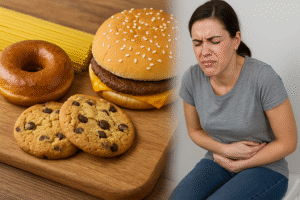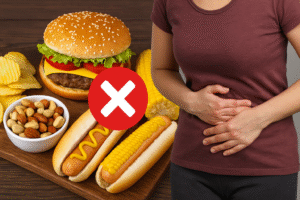Whether you’re controlling celiac disease, gluten sensitivity, or you’re just trying a gluten-free diet in general, it’s helpful to know what foods that have gluten so that you can be healthier and sidestep the unpleasant effects of gluten. Gluten is a protein contained in wheat, barley and rye, and it can appear in some unexpected places — from your morning cereal to your soy sauce.
We’re going to tell you the 7 most common everyday foods that have gluten, help you understand why they can be an issue for some people, and provide smart substitutions you can count on to safely manage your diet.
1. Bread and Baked Goods
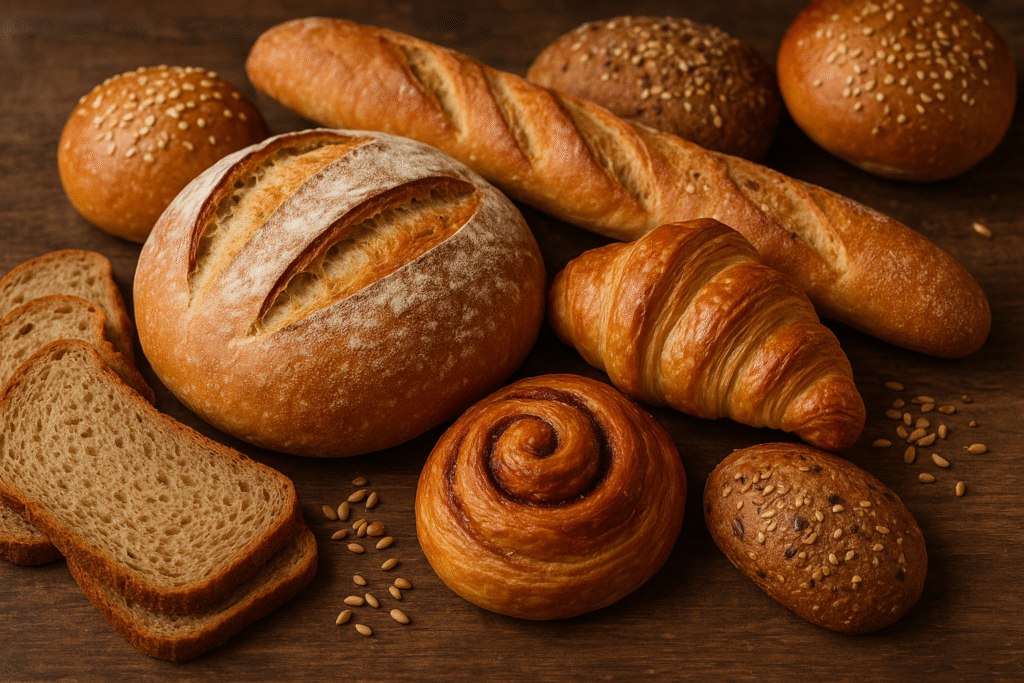
Bread is one of those most obvious foods that have gluten, but there are so many different types that it’s easy to overlook: white bread, multigrain, rolls, bagels, and even some so-called “healthy” seeded loaves.
Why it matters: Nearly all commercial breads are made with wheat flour, a variety that contains a good deal of gluten. Those with celiac disease can suffer intestinal damage from even tiny amounts. For others with non-celiac gluten sensitivity, symptoms such as bloating and fatigue are common.
Instead try: Seek out gluten-free certified breads made with rice, almond or coconut flour.
The bottom line: Always read labels; some breads marketed as “wheat-free” may still contain gluten-containing grains.
2. Pasta

Another common ingredient among foods that have gluten, pasta is usually made from semolina or durum wheat.
Why it matters: Gluten is what makes pasta chewy, but if you’re sensitive, eating pasta can make you bloated, has been known to induce joint pain, and could even cause a whole bunch of nutrients to just go straight through you every time you eat it, babygirl.
Try this instead: Seek out gluten-free pastas made from lentils, quinoa or chickpeas — they supply protein and fiber as well.
Traditional pasta is a high-gluten food, but there are palatable gluten-free varieties that stand up well in your favorite recipes.
3. Cereal and Granola
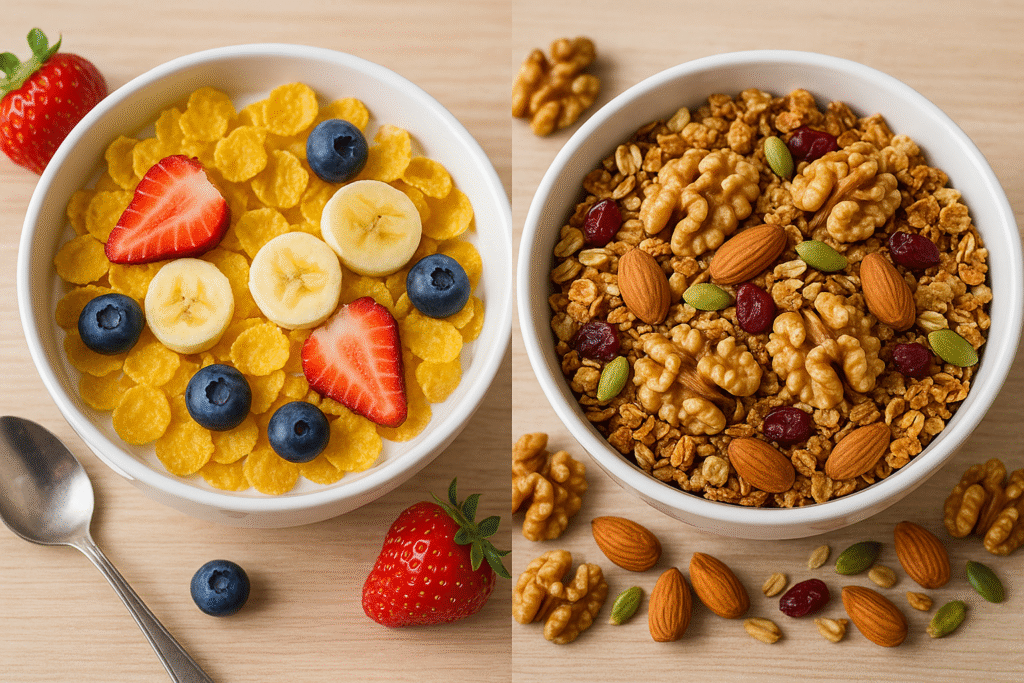
Cereal can seem like a safe option, but many popular brands are foods that have gluten — even ones that appear “healthy.”
Why it matters: Many cereals have wheat-derived ingredients, or are cross-contaminated in the production process. There are a few other tricky sources of gluten to watch out for: it can also hide in flavorings and in malt extract, which is made from barley.
Try this instead: Look for products that are certified gluten-free or contain oats or cereals that are clearly made from corn, rice or buckwheat.
What to look for: Be sure to look for a gluten-free certification to ensure your morning bowl isn’t taking a toll on your gut health.
4. Soy Sauce and Marinades
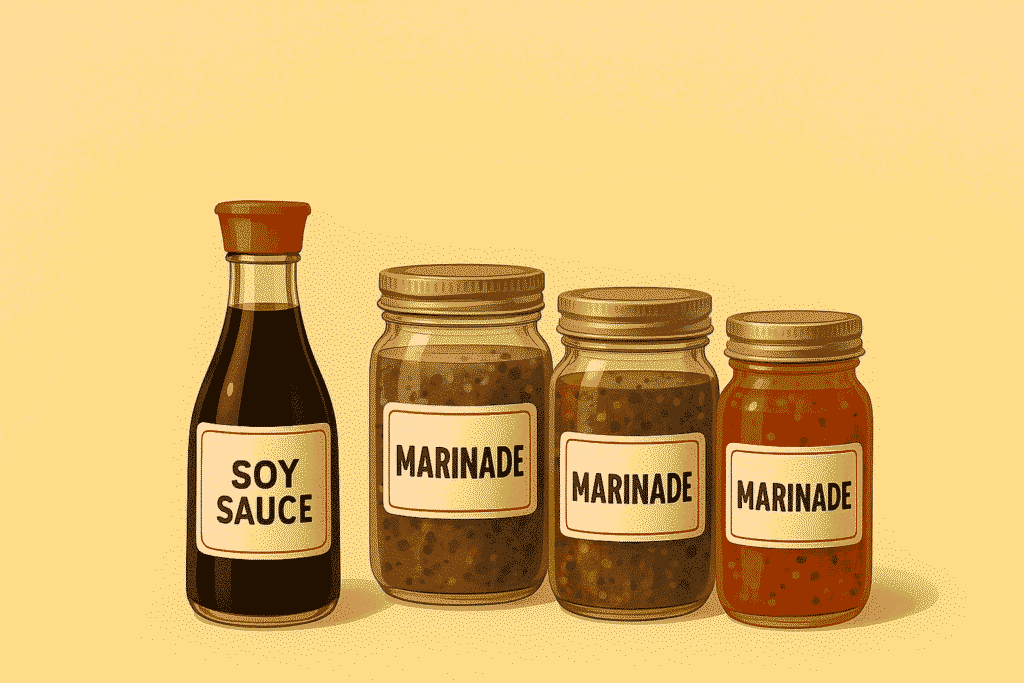
Yes, that’s right—condiments can even be foods that have gluten. Soy sauce is a big culprit.
Why it matters: Real soy sauce is brewed with wheat. While the gluten levels may be low, it can still present a problem for people suffering from celiac or gluten intolerance.
Try this instead: Tamari is a type of Japanese soy sauce that’s usually gluten-free — but you’ll want to double-check the label.
Bottom line: Always look closely at sauces and marinades, as many are sneaky sources of gluten.
5. Beer and Certain Alcohols

Craft beer especially is one of the most commonly overlooked foods that have gluten.
Why it matters: Most types of beer are brewed with barley or wheat, two of the top grains that are forbidden for those with the gluten sensitivity. Certain liquors and flavored spirits can also harbor hidden gluten.
Instead try: Gluten-free beers that are made from sorghum or rice or stick with spirits that are naturally gluten-free such as tequila, rum or pure distilled vodka.
Stick with beverages that are labeled gluten-free — especially if you’re drinking with others and want to avoid any unwanted side effects.
6. Processed Meats

It may not be intuitive, but deli meats, sausages and even meat substitutes are among the foods that have gluten.
Why it matters: Fillers, binders and flavors that contain gluten are frequently included to help bind ingredients, while also creating texture and a longer shelf life. This is particularly common in seasoned meats or in knockoff products.
Instead, try: Find whole, unprocessed meats and season your food with gluten-free herbs and spices.
Bottom Line: Just because it’s meat does not mean it’s gluten-free — always check the label carefully.
7. Soups and Gravies

Many creamy soups, gravies and stews are thickened with flour, making them frequent foods that have gluten.
Why it matters: If a soup is not explicitly labeled gluten-free, it will probably include wheat flour or barley-based thickeners.
Instead try: Making your own thickening powder with corn starch, arrowroot, or gluten-free flour alternatives.
Takeaway: Make your own soups and you can control everything you’re getting, the safer choice for gluten-free living.
Conclusion: Awareness Is the Starting Point
Knowing that foods that have gluten can cause symptoms that range from unpleasant discomfort to long-term health conditions is vital to managing a condition like celiac disease or gluten sensitivity. It may seem challenging at first to eliminate gluten from your diet, but the silver lining is that more options than ever are gluten-free.
Pro tip: Always seek the certified gluten free label on products, and when in doubt, cook from scratch. That means you can know exactly what’s going into your food.
Armed with the right know-how and some savvy label-reading skills, you can keep your diet balanced, enjoyable and gluten-free without ever once feeling deprived.
Ready to own your gluten-free journey? Bookmark this list, share it with friends and continue discovering safe and delicious gluten free versions of the most popular foods that have gluten.




